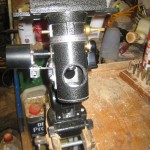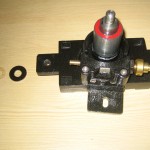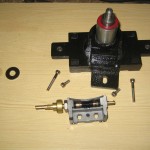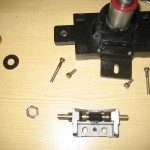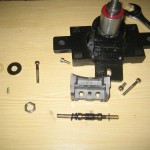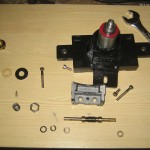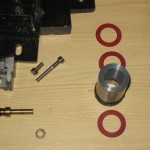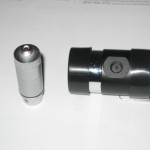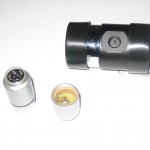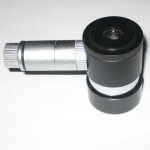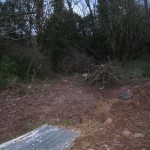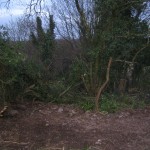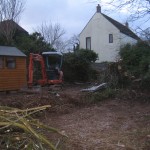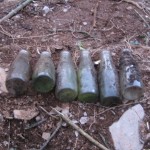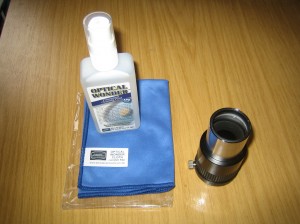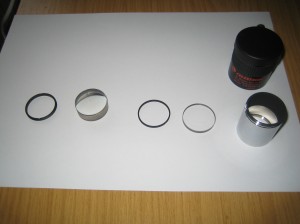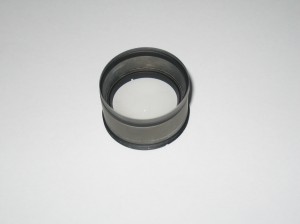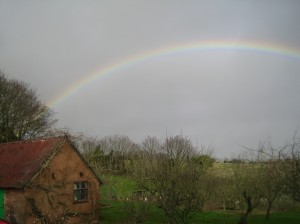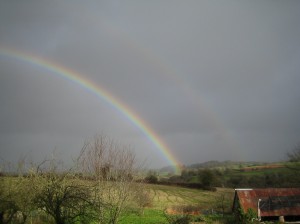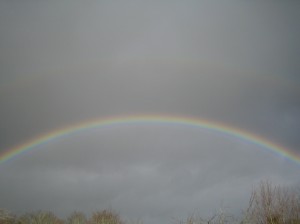Whilst I had the mount on the bench I thought I’d have another look at what seems to be a perennial problem with the Skywatcher mounts at UK latitudes: the mounts are at the limits of their design spec. for the alt adjustment which regularly results in problems with the south side bolt bending or running off the adjustment cam, or both (as in my case).
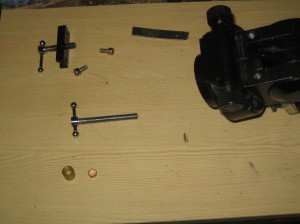 I’d already had the south bolt out to straighten it and not been at all happy with the way the bolt worked since. I know that some people have fixed an extra piece of stainless sheet over the cam with epoxy resin effectively making it harder and longer, but having gone to the trouble of cutting some suitable sheet up I decided that it that doesn’t seem like entirely the right solution. It struck me that what’s required is some sort of “tappet” that rides on the cam and is free to rock as it changes angle relative to the bolt, preventing the bolt being loaded sideways. In a box of plumbing bits I found a 10mm brass end cap and an 8mm olive that would fit inside it nicely. (You can see them in the bottom left of the photo.) The bolt fitted inside the olive with some room for the end cap to rock, though not much. I made obeisance to the Greek Goddess of Adhesives, Araldite, and used a little to fix the olive inside the end cap. I then fiddled the entire thing onto the end of south side bolt so it rests on the alt cam.
I’d already had the south bolt out to straighten it and not been at all happy with the way the bolt worked since. I know that some people have fixed an extra piece of stainless sheet over the cam with epoxy resin effectively making it harder and longer, but having gone to the trouble of cutting some suitable sheet up I decided that it that doesn’t seem like entirely the right solution. It struck me that what’s required is some sort of “tappet” that rides on the cam and is free to rock as it changes angle relative to the bolt, preventing the bolt being loaded sideways. In a box of plumbing bits I found a 10mm brass end cap and an 8mm olive that would fit inside it nicely. (You can see them in the bottom left of the photo.) The bolt fitted inside the olive with some room for the end cap to rock, though not much. I made obeisance to the Greek Goddess of Adhesives, Araldite, and used a little to fix the olive inside the end cap. I then fiddled the entire thing onto the end of south side bolt so it rests on the alt cam.
Whilst it’s an improvement, it’s not a big improvement and I’m not entirely happy with it. I’m now thinking that what’s probably required is a block with a dished centre to be fixed to the back of the came so the bolt always bears in roughly the same place and can’t slide down the cam as it moves further away. It’s more tricky to do, too. Of course what’s really required is for Skywatcher to redesign the mount for more northerly latitudes, but I can’t see that happening before Betelgeuse goes supernova.

